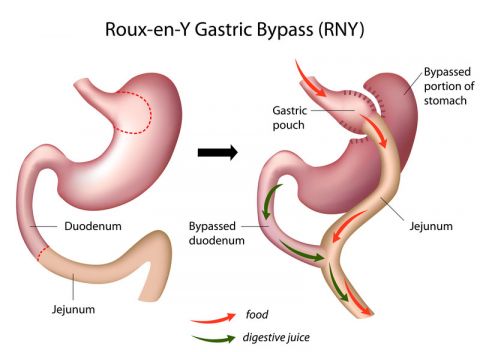Body
GASTRIC BYPASS PARIS
It is a restrictive and malabsorptive intervention at the same time.
Restrictive because it reduces the capacity of the stomach by creating a gastric pocket, separated from the rest of the stomach and which receives food.
Malabsorptive because the hail segment which is connected to the gastric pouch does not receive bile and pancreatic enzymes. These are important for absorbing what you eat.
- The malabsorption mechanism is obtained by dividing the initial part of the small intestine in two and connecting the lower segment to the gastric pouch. The upper segment is then connected approximately 150 cm apart.
- Food will therefore bypass most of the stomach, the duodenum and the first 50 of the small intestine. In addition, in the initial portion of the new food path (first 150 cm), there will be reduced absorption due to the absence of bile and pancreatic enzymes.
- The third mechanism is in addition to the two mechanisms also present after a sleeve: that is to say, a decrease in gastric capacity and a decrease in the feeling of hunger linked to the reduction of ghrelin secretion.
It must be said that malabsorption will affect fats and sugars more than proteins.
Vitamin supplementation is advised for life. Medical and nutritional monitoring is therefore very important.
The bypass can be performed laparoscopically or robotically
It is essential to have regular follow-up after surgery: A consultation with the surgeon twice a year and with the nutritionist 4 times a year. A long-term follow-up is necessary.
♦To make an appointment with Dr. Bruto Randone, ENGLISH SPEAKING Visceral Digestive and Bariatric Surgeon, at the Clinique Internationale du Parc Monceau, 21 Rue de Chazelles, 75017 Paris, France, or at the Clinique Bizet, 23 Rue Georges Bizet, 75116 Paris, France, click on Contact

